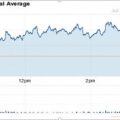Investing in Index Funds: What You Need to Know
Investing in Index Funds: What You Need to Know
If you’re new to investing, the world of stocks and bonds can seem overwhelming. With so many options available, it’s easy to get caught up in the hype and make a few costly mistakes along the way. That’s why we want to introduce you to one of the simplest, most effective ways to invest: index funds.
What are Index Funds?
Index funds are a type of investment vehicle that tracks a specific market index, such as the S&P 500 or the Dow Jones Industrial Average. The idea behind an index fund is to replicate the performance of the underlying index by investing in a basket of securities that mirrors its composition.
Think of it like this: imagine you’re trying to invest in the entire US stock market, but you don’t have the time, money, or expertise to do so on your own. An index fund gives you the same exposure to the market without requiring you to pick individual stocks or worry about managing a portfolio.
How Do Index Funds Work?
Here’s how it works:
- Choose an Index Fund: There are thousands of index funds available, covering everything from specific sectors (like technology or healthcare) to broad-based global indexes.
- Invest in the Fund: You deposit money into the index fund, which is then used to buy shares in the underlying securities that track the chosen index.
- Automated Management: The index fund manager periodically rebalances your portfolio to ensure it remains aligned with the original index.
- Passive Investing: Unlike actively managed funds, which try to beat the market by making frequent trades and adjustments, index funds aim for a passive approach. They focus on capturing the performance of the underlying index rather than trying to outperform it.
Benefits of Index Funds
Index funds offer several advantages over other investment options:
- Low Costs: By not actively managing the fund, you save money in fees.
- Consistency: Index funds provide stable returns over time, as they’re designed to track a broad market index rather than trying to make quick gains.
- Diversification: With an index fund, you gain instant exposure to multiple stocks or bonds without having to pick individual securities.
- Convenience: No need to worry about day trading, portfolio rebalancing, or other investment hassles.
Choosing the Right Index Fund
With so many options available, selecting the right index fund can be a challenge:
- Understand Your Goals: What are you trying to achieve through your investments? Are you saving for retirement, a down payment on a house, or a short-term goal?
- Assess Your Risk Tolerance: How comfortable are you with market fluctuations? Index funds with lower risk profiles often track broad-based indexes like the S&P 500.
- Research and Compare Funds: Look at the fund’s expense ratio, investment minimums, and fees to ensure it aligns with your goals and budget.
Types of Index Funds
Here are some popular types of index funds:
- Stock Index Funds: Track a specific market index, like the S&P 500 or Dow Jones Industrial Average.
- Bond Index Funds: Focus on fixed-income securities, offering stable returns for those seeking income.
- Sector Index Funds: Concentrate on a specific industry or sector, such as technology or healthcare.
- International Index Funds: Provide exposure to foreign markets and currencies.
How to Get Started
Now that you know the basics of index funds, here’s how to get started:
- Open an Account: Choose a reputable online brokerage firm or financial institution to open a new account.
- Fund Your Account: Deposit money into your account, which will be used to invest in index funds.
- Select Your Funds: Browse the available options and choose the ones that align with your goals and risk tolerance.
Investing in Index Funds: A Long-Term Strategy
The key to success with index funds is understanding that investing is a long-term game. It’s essential to:
- Start Early: The power of compound interest can help you build wealth over time.
- Be Patient: Markets tend to be volatile, so it’s crucial to avoid making emotional decisions based on short-term fluctuations.
- Monitor and Adjust: Periodically review your investments and rebalance your portfolio as needed.
By following these guidelines and understanding the benefits of index funds, you’ll be well on your way to creating a solid investment strategy that suits your goals and risk tolerance.







